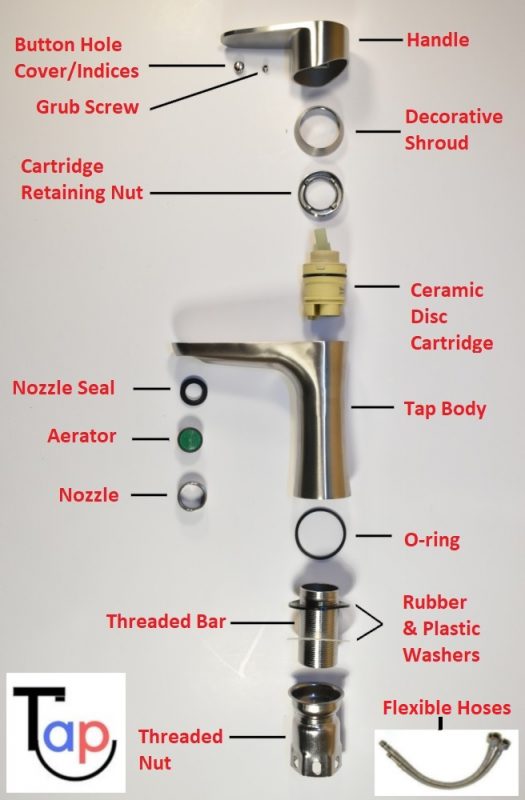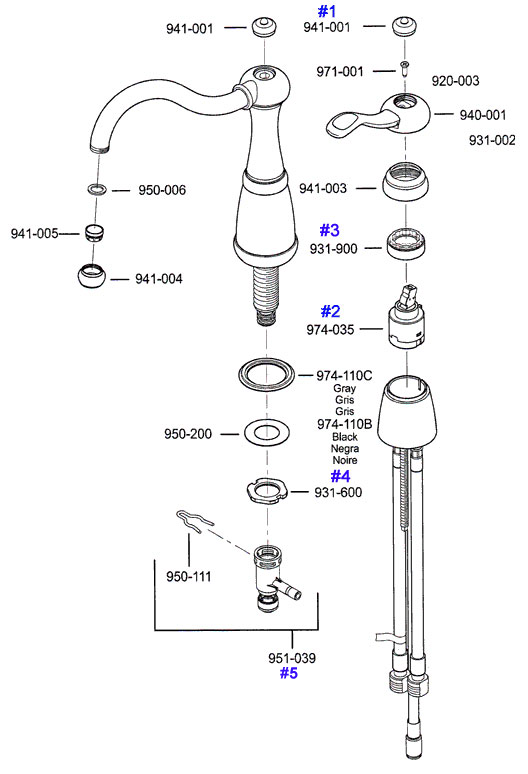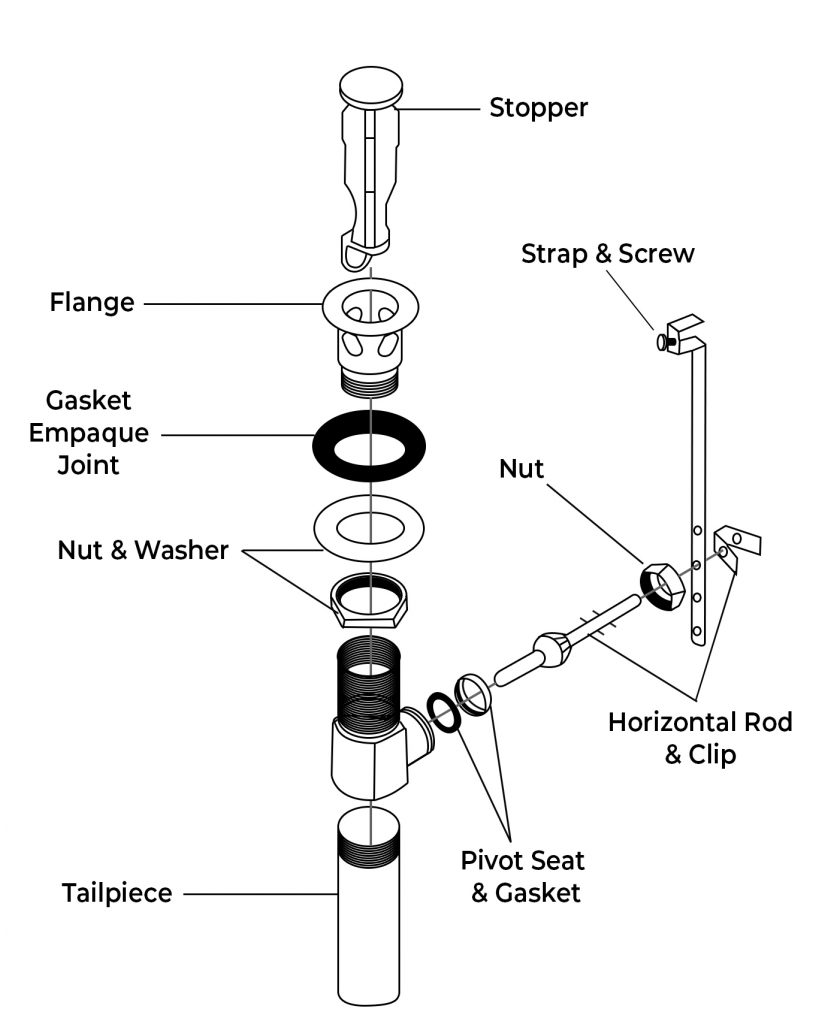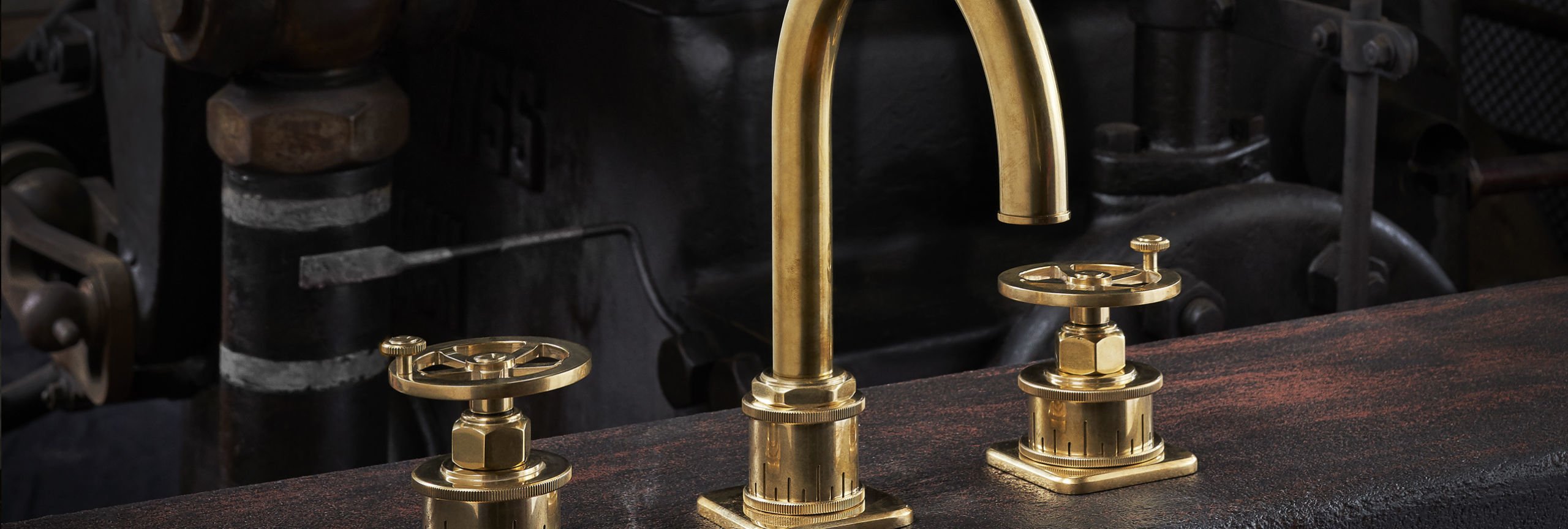Kitchen water faucets are essential fixtures in any kitchen, providing a convenient and efficient way to access clean water for cooking, cleaning, and drinking. Understanding the different parts of a kitchen water faucet can help homeowners troubleshoot common issues, perform basic maintenance, and make informed decisions when repairing or upgrading their faucets. While the specific design and components of kitchen faucets may vary depending on the brand and model, most faucets consist of several key parts that work together to control the flow and temperature of water.
One of the main components of a kitchen water faucet is the spout, which is the part of the faucet that delivers water into the sink. Spouts come in various shapes and sizes, including straight, curved, and goose-neck designs, and may feature different finishes to complement the overall style of the faucet. Some faucets also come with pull-down or pull-out sprayer heads attached to the spout, providing added versatility for tasks such as washing dishes and filling pots.

Another important part of a kitchen water faucet is the handle or handles, which are used to control the flow and temperature of the water. Most kitchen faucets have either a single-handle or dual-handle design. Single-handle faucets have a lever or knob that controls both the flow and temperature of the water, while dual-handle faucets have separate handles for hot and cold water. Handles may be made of metal, plastic, or other materials and come in various shapes and styles to suit different preferences.
Inside the faucet body, there are several key components that control the flow and temperature of the water. These include the cartridge, which is a valve that regulates the flow of water, and the aerator, which is a small mesh screen that helps to reduce splashing and conserve water by mixing air into the stream. Additionally, many modern faucets feature ceramic disc valves, which provide smooth and reliable operation and are more durable than traditional rubber washers.

The supply lines are another important part of a kitchen water faucet, as they connect the faucet to the hot and cold water supply lines under the sink. Supply lines are typically made of flexible braided stainless steel or plastic and are available in various lengths to accommodate different installation configurations. It’s essential to ensure that the supply lines are properly connected and free of leaks to prevent water damage and ensure the reliable operation of the faucet.
To keep kitchen water faucets functioning properly, regular maintenance and occasional repairs may be necessary. Common maintenance tasks include cleaning the aerator to remove mineral deposits, lubricating moving parts to prevent sticking and corrosion, and checking for leaks or drips. If a faucet is leaking or dripping, it may be necessary to replace worn or damaged parts such as the cartridge or seals to restore proper functionality.

Common mistakes to avoid when dealing with kitchen water faucet parts include:
- Overtightening connections, which can damage threads and cause leaks.
- Using harsh chemicals or abrasive cleaners on faucet parts, which can damage finishes and components.
- Neglecting to turn off the water supply before attempting repairs or maintenance, which can result in flooding or water damage.
- Reusing old supply lines or fittings when installing a new faucet, which can lead to leaks and other issues.
- Failing to properly align or seat parts such as cartridges and seals during installation, which can result in leaks and poor performance.

How do I know if my kitchen faucet needs repairs or replacement?
Signs that your kitchen faucet may need repairs or replacement include leaks or drips, difficulty controlling the flow or temperature of the water, and visible signs of wear or damage to faucet parts such as handles or cartridges.
Can I replace the kitchen faucet parts myself, or do I need to hire a professional plumber?
Many kitchen faucet repairs and replacements can be done DIY, especially for simple tasks such as replacing worn or damaged parts like cartridges or seals. However, more complex repairs or installations may require the expertise of a professional plumber.
How often should I clean and maintain my kitchen faucet?
It’s a good idea to clean and maintain your kitchen faucet regularly to keep it functioning properly and looking its best. Basic maintenance tasks such as cleaning the aerator and lubricating moving parts can be done every few months, while more extensive maintenance may be needed annually or as needed.
Can I upgrade my kitchen faucet with additional features such as a pull-down sprayer or touchless operation?
Yes, many kitchen faucets are available with additional features and options, such as pull-down or pull-out sprayer heads, touchless operation, and built-in water filtration systems. When upgrading your faucet, be sure to choose a model that is compatible with your existing plumbing and installation setup.
How do I choose the right kitchen faucet parts for my faucet?
When choosing kitchen faucet parts such as cartridges, seals, or aerators, it’s important to select parts that are compatible with your specific faucet model and brand. Refer to the manufacturer’s instructions or consult with a plumbing professional to ensure you choose the right parts for your faucet.
:no_upscale()/cdn.vox-cdn.com/uploads/chorus_asset/file/19637520/09_kitchen_faucet.jpg)
Replacing Kitchen Faucet A Creative Mom

How To Fix A Leaky Kitchen Faucet Single Handle?

Fix Leaky Faucet Base – How to Replace Single-Control Faucet Diverter – YouTube

Kitchen Faucet identification

Moen quick-connect installation system 2014-04-22 Plumbing and Mechanical

Sink Pop Up Drain Sink Water Stopper – All in One Installation Manuals

Water Saving Kitchen Sink Faucet Head – YouTube

How to Install a Kitchen Faucet: 15 Steps (with Pictures)

Steampunk Bathroom Series – California Faucets

Related Posts:
- Kitchen Faucet Pull Out Spray Head
- B&K Kitchen Faucet Repair
- Pfister Ainsley Kitchen Faucet
- Vigo Stainless Steel Kitchen Faucet
- Delta High Rise Kitchen Faucet
- Wrought Iron Kitchen Faucet
- Kitchen Faucet With Pur Water Filter
- Kitchen Faucet With Built In Sprayer
- 8 Inch Spread Wall Mount Kitchen Faucet
- Kitchen Faucet With 13 Inch Spout Reach